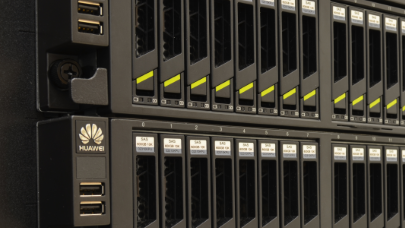It’s a regular renewal process – around every three years – of calculation resources for Météo-France. But for the first time, after a more than twenty year preference for vector machines, the French national weather and climate center has acquired an x86 superscalar machine provided by Bull.
Météo-France works closely with its European and international counterparts in ongoing efforts to improve numerical weather prediction models. It is accordingly one of first European agencies, along with the British Met Office and the German DWD, to use a 2.5 km mesh model, refreshed several times a day, in order to produce short-term forecasts (30 hours). Thanks to these investments in computing resources and research, one day of prediction is gained every ten years. Thus, forecasts for four days are now as reliable as forecasts made for three days in 2004. As for temperature accuracy at a given point within 24 hours, it is now within the one degree range (reaching up to three degrees over seven days).
In this context of excellence, the massive parallelism of superscalar architectures has finally gotten the better of vector computing at Météo-France. The new Bull system is a twelvefold increase in power over MF’s previous flagship, an NEC SX 9. Made up of 25 server racks equipped with liquid-cooled bullx B710 DLC blades (plus 6 storage cabinets totaling about 3.5 PB of data), it reaches in excess of 1 Pflops peak. With this extra power, Météo France is looking to improve forecast models, most notably in terms of resolution, in research mode over the course of this year and then in operation by 2015. Additionally, the contract with Bull provides a second-stage target increase of more than 5 Pflops by 2016.
In terms of usage, 70% of computing resources are used for numerical weather prediction, 15% for climate research, 10% for oceanographic research (MERCATOR & SHOM) and 4% for advanced research in digital simulations with CERFACS.
A number of tangible results are expected once the machine is in full operation. In the purely weather field, these new resources will benefit nearly all “consumers” whether institutional, aviation, professional or the general public through more accurate and reliable forecasts. Increasing the resolution of the models and the integration of a larger number of observations will significantly improve the forecasts quality of heavy rainfall, storms, ground temperatures and cloud cover – the primary objective of these computations being to anticipate potentially dangerous phenomena.
In order to accomplish this, Météo-France continues to refine its three prediction models: ARPEGE, which covers the entire globe with resolutions of 10 km on the mainland and of 60 km to the antipodes; ALADIN, which operates in an area of 3,000 km2 with a mesh of 7.5 km; and AROME, the finest model with a mesh of 2.5 km, which covers metropolitan France. With the new system, engineers should be able to quickly reduce the mesh used in AROMA to 1.3 km and incorporate a technique called ensemble forecasting, used only in ARPEGE for the moment, which performs multiple simulations for the same prediction. By refreshing more frequently (every hour), AROME will be able to deal with rapidly changing phenomena, i.e. data heavily used in aeronautics.
Last, on the research side, a new tool called AROME-Climat will also benefit from the new high performance computing resources by allowing the inclusion of extreme effects in climate change impact studies at the regional level. The new data will be used in a certain number of new studies, and should help further refine evidences in the forthcoming IPCC reports.
3 questions to Damien Déclat
HPC PreSales & Performance Director,
eXtreme Computing, Bull
1 – What motivated Météo-France to switch from vector to scalar?
A series of benchmarks conducted during the request for proposals in 2012 clearly showed a performance gain resulting from the use of x86 technologies, especially with the Intel Xeon E5 v2 processors now equipping the two new Bull machines installed in 2013/2014 that are based on the bullx B710 blades. These technologies allow an increase in computing power and the number of available nodes. They also leverage developments made in forecasting and climate codes on the same type of solutions in Météo-France’s widespread user communities and partners.
2 – What plans and difficulties arose from porting existing codes?
All Météo-France’s application codes have been ported and optimized during 2013, thanks to MF teams’ implication and the support of Bull application experts. In addition to traditional porting, it was essential to ensure the accuracy of these ports (verification that the vector and scalar versions of the applications produced the exact same results) in order to validate the consistency of Météo-France’s operational production.
3 – The project roadmap provides for a power increase to 5 Pflops in 2015. Will it be an upgrade or a new architecture?
Météo-France’s two computers will be successively modified and expanded by mid-2015 with the replacement of the bullx B710 blades (equipped with Intel Xeon v2 processors) by bullx B720 blades (equipped with Intel Xeon v4 processors), and the addition of more B720 blades. These operations will be carried out sequentially in order to maintain continuity of service and production.
© HPC Today 2024 - All rights reserved.
Thank you for reading HPC Today.






























